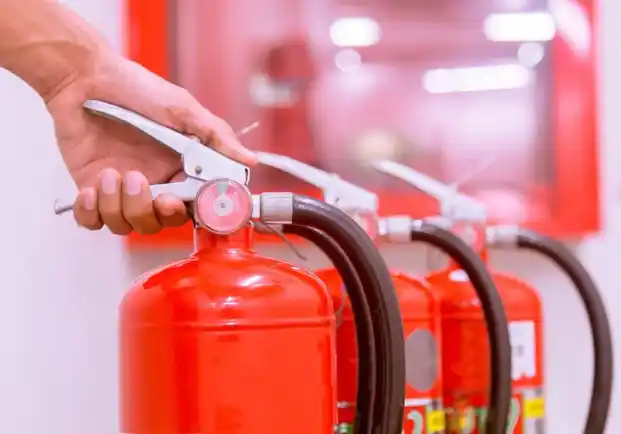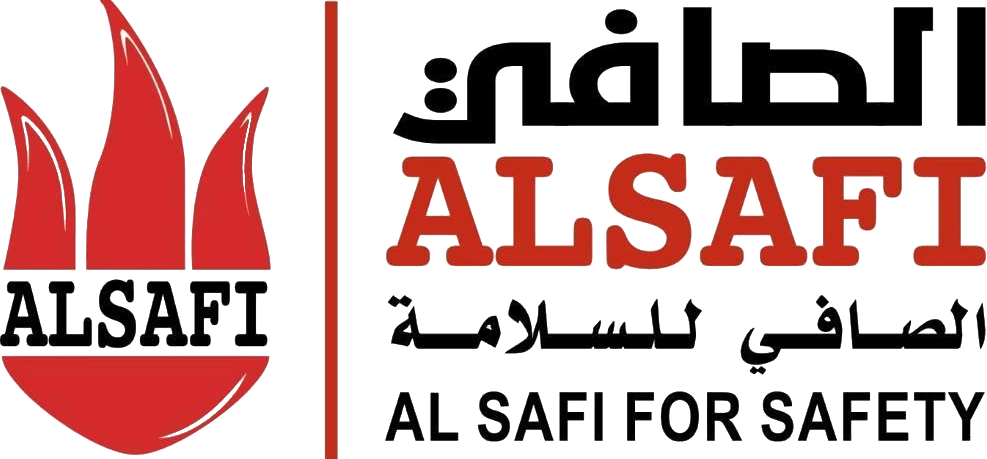What type of gas is used in fire suppression?

When fires break out in sensitive areas such as server rooms or technical labs, water is not the ideal extinguishing agent. This is where gas-based fire suppression becomes an effective and smart solution, controlling fires without causing collateral damage. In this article, we will explain the types of gases used in fire suppression and the factors that determine the selection of the best fire extinguishing systems.
Causes of Industrial Fires and Prevention Methods
Industrial fires are among the most dangerous disasters for factories and production facilities, as they can cause significant human and material losses. Here are the main causes and prevention methods:
Causes of Industrial Fires
1. Faulty or Worn Electrical Circuits
Old or poorly insulated electrical wires are a primary cause of fires in work environments, especially when high currents are present without regular maintenance.
2. Improper Storage of Flammable Materials
Storing flammable materials or chemicals near heat sources or without proper ventilation may cause spontaneous ignition or fire due to thermal contact.
3. Neglect of Safety Procedures
Failure to train employees on protective equipment usage or allowing smoking in the workplace increases the risk of fire.
4. Friction and Heat from Machinery
Machines that are poorly lubricated or run for long periods without cooling may generate heat capable of igniting oils or grease.
Industrial Fire Prevention Methods
1. Regular Maintenance of Electrical Equipment and Machines
Regularly inspect all machines and electrical connections to ensure safety and prevent sparks or excessive heat.
2. Proper Storage of Hazardous Materials
Store flammable materials in designated ventilated areas, away from fire or sparks.
3. Providing Appropriate Fire Extinguishers and Training
Distribute fire extinguisher types according to the risk in each area and train staff to respond to fires immediately, preventing spread.
Gases Used in Fire Suppression
Gas-based extinguishing agents are widely used in unoccupied spaces, sensitive areas, and environmentally-conscious applications. Compared to traditional agents, gaseous extinguishers offer rapid fire suppression, leave no residue, and are suitable for sensitive equipment.
1. Inert Gas Fire Suppression
Inert gases work by reducing oxygen levels in the fire zone below what is needed to sustain combustion. They are non-toxic, environmentally friendly, and safe for personnel and equipment.
2. Halogenated Gas Fire Suppression
Halogenated gases inhibit the chemical chain reactions of combustion. They are highly efficient, making them suitable for occupied areas while protecting sensitive equipment.
3. Carbon Dioxide (CO₂) Fire Suppression
CO₂ extinguishers work by absorbing heat and displacing oxygen to suppress fire. They are cost-effective and highly efficient but pose asphyxiation risks, so they are mainly used in unoccupied areas.
How to Choose Fire Suppression Equipment
Key factors in selecting fire suppression equipment include:
1. Size and Area of the Space
Extinguishing devices vary depending on space size. Large areas may require fixed systems such as sprinkler networks, while small offices may only need portable extinguishers.
2. Type of Potential Fire
Identify the likely fire types, such as solid, flammable liquid, or electrical fires, since each requires a specific type of extinguisher.
3. Ease of Use
Select extinguishers that can be easily operated by staff, especially in urgent situations.
Al Safi Company – Leading Gas Fire Suppression Systems
- Al Safi is a leading provider in Saudi Arabia, with over 40 years of experience, offering advanced gas-based fire suppression systems that protect property and sensitive equipment.
- The company provides solutions using FM200, Novec 1230, or CO₂ systems according to Civil Defense standards, including installation, inspection, and regular maintenance to ensure readiness at all times.
- Al Safi’s systems are competitively priced, providing high-quality fire suppression at an affordable cost. Contact us to get the best gas fire suppression systems at the best price.
This article introduced the types of gases used in fire suppression, the best systems for sensitive areas, and how to choose the appropriate equipment for your site.
Frequently Asked Questions
What are flammable gases?
A flammable gas burns in oxygen or air. Examples include hydrogen, isobutane, propane, and methane. A mixture of oxygen and these gases can explode in the presence of an ignition source.
What is the best gas for fire suppression?
Carbon dioxide (CO₂) is one of the most common and effective gases for extinguishing fires. Its high density allows it to settle on surfaces, suffocating the fire and cutting off oxygen supply.
Why is CO₂ used for fire suppression?
CO₂ is non-conductive and non-flammable, making it an effective and safe option. It extinguishes fires without damaging property and requires no cleanup afterward.



